|
|
Thermal Spray Coatings for Aircraft CMC Hot-end Components: Opportunities and Challenges
TAO Shunyan, YANG Jiasheng, SHAO Fang, WU Yingchen, ZHAO Huayu, DONG Shaoming, ZHANG Xiangyu, XIONG Ying
2024 Vol. 39 (10): 1077–1083
 Abstract
Abstract(
187 )
 HTML
HTML(
11)
 PDF
PDF(4626KB)(
195
)
With the rising of the gas inlet temperature in front of the turbine of aero-engine, ceramic matrix composites (CMCs) have emerged as the preferred matrix material for the new generation of high-temperature components in aero-engine due to their light weight, high strength, oxidation resistance, insensitivity to crack, and excellent temperature durability. However, because of their limited resistance to high temperature water vapor and oxygen erosion, development of thermal spray coating technology for hot-end components of CMCs engines has become an urgent challenge to be overcome. In this paper, based upon changes of material selection strategies and application examples of foreign aero-engines, technical limitations of the employed superalloys + film cooling + thermal barrier coatings (TBCs) for hot-end components of aero-engines were analyzed, and technical advantages of the utilized CMCs + appropriate film cooling + environmental barrier coatings (EBCs) were consolidated. Thermal and environmental barrier coatings (TEBCs) and environmental barrier coatings-abradable sealing coatings (EBCs-ASCs) for CMCs were reviewed on the basis of recent research findings from domestic and oversea scholars. Finally, opportunities and challenges associated with thermal spraying EBCs for higher temperature gas flow were analyzed, and the direction of design and preparation on a certain composition and structure for TEBCs was clarified, among which the focal points of future research endeavors were prospected.

|
|
|
Preparation and Properties of Aluminum Silicate Fiber Supported PtTFPP-PDMS Flexible Oxygen Sensing Components
ZHAO Yawen, QU Fajin, WANG Yanyi, WANG Zhiwen, CHEN Chusheng
2024 Vol. 39 (10): 1084–1090
 Abstract
Abstract(
129 )
 HTML
HTML(
8)
 PDF
PDF(2306KB)(
90
)
Flexible sensors have wide applications in various fields such as biomedicine, environmental monitoring and smart wearable devices, as they can adapt to diverse complex environments and curved surfaces. This study aimed to develop resilient and flexible oxygen sensors based on fluorescence quenching. A flexible oxygen sensing component was prepared, comprising aluminum silicate fibers as the support, polydimethysiloxane (PDMS) as the matrix, and platinum tetrakis pentafluorophenyl porphyrin (PtTFPP) as the oxygen probe. The component exhibited superhydrophobicity with a water contact angle of 152°, which was beneficial for maintaining integrity in humid atmospheres and aqueous solutions. It showed the fluorescence quenching effect towards gaseous oxygen and dissolved oxygen in water, which could be well fitted by the Stern-Volmer equation with KSV constants of 0.020 h·Pa-1 for the gaseous oxygen and 2.94 L·mmol-1 for the dissolved oxygen. The component also demonstrated good reversibility and fast response in rapidly altered atmosphere, with a response time of 0.9 s from nitrogen switching to oxygen and a recovery time of 2.7 s from oxygen switching to nitrogen. Additionally, the PtTFPP-PDMS component displayed remarkable stability concerning its relative fluorescence intensity and water contact angle even after exposure to 100 ℃ steam for 15 h, soaking in pH 1-10 aqueous solutions, and enduring 400 bending cycles. The aluminum silicate fiber-supported PtTFPP-PDMS film developed in this study exhibited excellent fluorescent oxygen sensing properties and stability, making it a promising candidate for oxygen sensors, and suitable for determination of gaseous and dissolved oxygen in challenging environments.
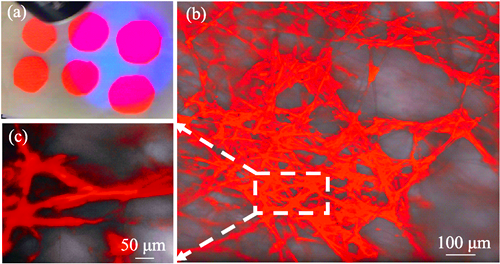
|
|
|
Preparation and Properties of Hard PZT Piezoelectric Ceramics Poled above Curie Temperature and Multilayer Actuators
JIANG Qiang, SHI Lizhi, CHEN Zhengran, ZHOU Zhiyong, LIANG Ruihong
2024 Vol. 39 (10): 1091–1099
 Abstract
Abstract(
151 )
 HTML
HTML(
2)
 PDF
PDF(5573KB)(
268
)
Piezoelectric multilayer actuators feature large displacement generation at a relatively low driving voltage and are widely used in various fields. As the most commonly used material in multilayer actuators, soft lead zirconate titanate (PZT) ceramics have higher dielectric constant and loss, which often lead to higher power consumption and heat generation that in turn affect fatigue characteristics and stability of piezoelectric multilayer actuators. In this work, Mn-doped (in mole fraction) Pb(Sb1/2Nb1/2)0.02Zr0.51Ti0.47O3-0.6%MnCO3 (PSN-PZT) hard ceramic was selected as base material in order to prepare piezoelectric ceramics that have low heat generation and are suitable for the application of piezoelectric multilayer actuator. Certain amount of Li2CO3 was doped as sintering aid for lowering sintering temperature of ceramics, and above-Curie-temperature polarization was utilized to enhance electric properties of ceramics. Eventually, multilayer actuator composed of this material was fabricated via tape-casting process and compared with Pb(Mg1/3Nb2/3)0.25(Ti0.48Zr0.52)0.75O3 (PMN-PZT) actuator prepared with the same parameters. The results indicated that the sintering temperature of PSN-PZT ceramic was decreased to 1050 ℃ due to Li2CO3 sintering aid, which introduced liquid sintering during the sintering process. PSN-PZT ceramics poled above the Curie temperature obtained optimal electric performance with 0.1% (in mass) Li2CO3 doping, and the piezoelectric coefficient (d33) and unipolar strain at 2 kV/mm reached 388 pC/N and 0.13%, respectively. The results of temperature rise and strain degradation of both multilayer actuators indicated that the temperature rise of hard PSN-PZT actuator was about 20 ℃ lower than that of PMN-PZT actuator under 200 Hz and the strain decreased by 6% after 5×106 cycles. It indicates that PSN-PZT ceramics with Li2CO3 doping for lowering sintering temperature have some advantages in heat generation and fatigue characteristic while having descent piezoelectric properties, which endows it an important potential application in high-power, high-frequency and other demanding working conditions.
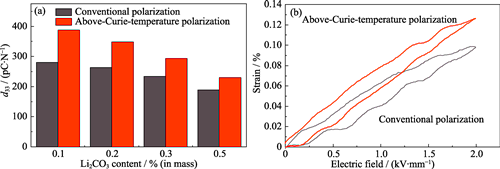
|
|
|
Structure and Piezoelectric Properties of CuO-doped (Ba,Ca)(Ti,Sn)O3 Ceramics
PENG Ping, TAN Litao
2024 Vol. 39 (10): 1100–1106
 Abstract
Abstract(
131 )
 HTML
HTML(
3)
 PDF
PDF(8579KB)(
177
)
(Ba,Ca)(Ti,Sn)O3 (BCTS) piezoelectric ceramics exhibit excellent piezoelectric properties and show great potential in the fields of piezoelectric sensors and transducers. However, their sintering temperature is very high, typically exceeding 1450 ℃, which limits their practical applications. In order to lower the sintering temperature, the oxide CuO was added into (Ba0.95Ca0.05)(Ti0.90Sn0.10)O3 ceramics as a sintering aid in this work. Herein, BCTS-xCuO piezoelectric ceramics were prepared by the conventional solid-state sintering method, and the influence of CuO content on the sintering temperature, structure as well as dielectric and piezoelectric properties of BCTS ceramics was investigated systematically. After adding CuO, the perovskite crystal structure was mainly formed in BCTS ceramics, with a small amount of secondary phases, which may be Ba2TiO4 and Ba2Cu3O5.9. Moreover, it was found that CuO doping can effectively reduce the sintering temperature of ceramics from 1480 ℃ to 1360 ℃ and improve the relative density of piezoelectric ceramics. The highest relative density (98.7%) and maximum average grain size (22.5 μm) were obtained at x=0.03. Hence, the optimal electrical properties were obtained at x=0.03 with piezoelectric coefficient d33=573 pC/N, planar electromechanical coupling coefficient kp=36%, relative permittivity εr=9467, and dielectric loss tanδ=0.021. Compared with other reported low-temperature sintered BaTiO3-based ceramics, the x=0.03 component ceramics in this study obtained higher d33 at a low sintering temperature, showing excellent comprehensive properties. In conclusion, this work demonstrates that CuO doping can successfully reduce the sintering temperature and optimize the piezoelectric properties of BCTS ceramics.
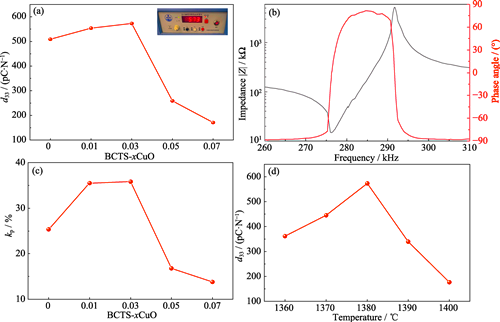
|
|
|
Preparation and Properties of BaSrGa4O8: Tb3+ Mechanoluminescent Materials
SHI Rui, LIU Wei, LI Lin, LI Huan, ZHANG Zhijun, RAO Guanghui, ZHAO Jingtai
2024 Vol. 39 (10): 1107–1113
 Abstract
Abstract(
131 )
 HTML
HTML(
3)
 PDF
PDF(3718KB)(
275
)
Mechanoluminescent (ML) materials, due to their unique mechanical-to-optical energy conversion, hold significant promise in stress sensing and are poised to become the next generation of visual strain-sensing materials. Currently, expanding ML material systems and enhancing their performance remain focal points of research. In this study, a series of Tb3+-doped green ML phosphors was synthesized using BaSrGa4O8 matrix (hexagonal crystal system, space group P63, with a non-centrosymmetric structure) via high-temperature solid-state synthesis. These materials emitted bright green light under various mechanical excitations (tension, compression, and torsion). Clear note mappings were observed by writing B, S, G, O, T, and b on the prepared ML elastomer with a glass rod. By analyzing the colormap, the stress conditions during the writing process could be traced. This is the first observation of ML phenomenon in the above-mentioned matrix doping system. Under 254 nm ultraviolet (UV) excitation, BaSr1-xGa4O8: xTb3+ phosphors exhibited bright green emission at 543 nm, which was attributed to 5D4-7F5 transition of Tb3+, and shared the same luminescent center as ML. The samples continued to display strong long persistent luminescence after UV irradiation was removed. By combining ML, photoluminescence (PL), and long persistent luminescence (LPL) with thermoluminescence (TL) analysis, further insights into their intrinsic connections were elucidated. In conclusion, this study broadens the range of high-performance ML material systems, showcasing potential applications in visual strain sensing, information security, and anti-counterfeiting.
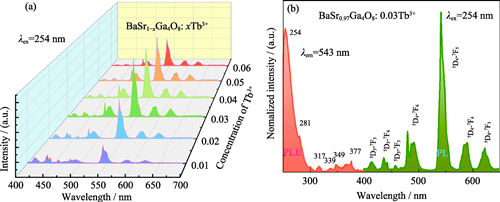
|
|
|
Novel Magnetoelectric Catalytic Nanoparticles: RNS Release and Antibacterial Efficiency
ZHANG Zhimin, GE Min, LIN Han, SHI Jianlin
2024 Vol. 39 (10): 1114–1124
 Abstract
Abstract(
150 )
 HTML
HTML(
4)
 PDF
PDF(8867KB)(
139
)
Compared with antibiotics and other drugs with poor functionalities and risk to induce bacterial resistance, inorganic functional nanomaterials with catalytic activity occupy an increasingly important position in the treatment of pathogenic infections by advantages of high response to the infected microenvironment (e.g. weak acid, high H2O2 concentration) or external physical stimuli (e.g. laser, ultrasound) and broad-spectrum sterilization. However, the acidic infection microenvironment is weak and unstable, and light or sound signals with high power density will cause damage to human cells. In addition, antimicrobial applications of alternative magnetic field (AMF), a non-invasive signal type with high tissue penetration, convenience to be remotely controlled, and effective magnetoelectric catalysis based on AMF have not been reported. In this study, an AMF-responsive nanocatalytic strategy based on the magnetostrictive-piezoelectric catalytic effect was applied to antibacterial research, and the surface of CoFe2O4-BiFeO3 magnetoelectric nanoparticles (BCFO) was modified with the nitrogen-containing group L-arginine (LA) to achieve a magneto-electric responsive controlled release of powerful bactericide reactive nitrogen species (RNS). In AMF, BCFO simultaneously generates reactive oxygen species (ROS) hydroxyl radical (·OH) and superoxide anion (·O2-). The former reacts with LA to release nitric oxide (NO), and the latter combines with NO to produce peroxynitrite (ONOO-), a typical RNS. As a highly active nitrification and oxidation agent, ONOO- could exhibit stronger antibacterial activity than ROS under biofriendly AMF. Successful production of ONOO- and achievement of stronger bactericidal efficiency were validated in this study. This work not only applies magnetoelectric nanocatalysis for antibacterial purposes, but also significantly improves the antibacterial ability through the conversion of ROS to RNS.
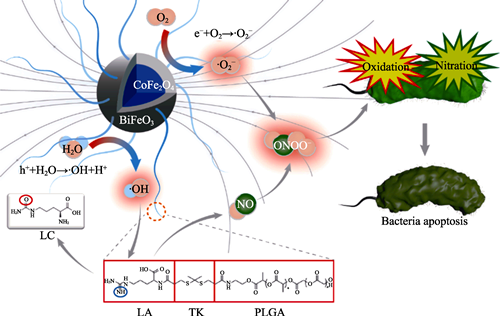
|
|
|
Sonodynamic and Enzyme-like Activities of Niobium-based Coatings: Antimicrobial, Cell Proliferation and Cell Differentiation
ZHANG Shumin, XI Xiaowen, SUN Lei, SUN Ping, WANG Deqiang, WEI Jie
2024 Vol. 39 (10): 1125–1134
 Abstract
Abstract(
110 )
 HTML
HTML(
3)
 PDF
PDF(15436KB)(
93
)
Currently, repair of infectious bone defects is still a clinical serious challenge. Here, a heterojunction coating of niobium oxide on pure niobium surface by using microarc oxidation and hydrothermal treatment was prepared. The results showed that the obtained heterogeneous junctions exhibited synchronously enzyme-like and ultrasonic dynamic properties triggered by ultrasound treatment, especially in acidic microenvironment of mimic bacterial infection. Under these key conditions, oxidase-like activity of the heterogeneous junctions was enhanced, generating several reactive oxygen species which can kill bacteria and remove their biofilm, with inhibition and clearance rates were 98.57% and 91.43%, respectively. Under simulated physiological conditions, ultrasound enhanced antioxidant-like enzyme activity of this kind heterogeneous junction, thereby scavenging reactive oxygen species, alleviating oxidative stress, and promoting proliferation and osteogenic differentiation of bone marrow mesenchymal stem cells (rBMSCs). In conclusion, the obtained niobium-based coatings with sonodynamic and enzyme-like activities have profound potential application prospects in infectious bone repair.
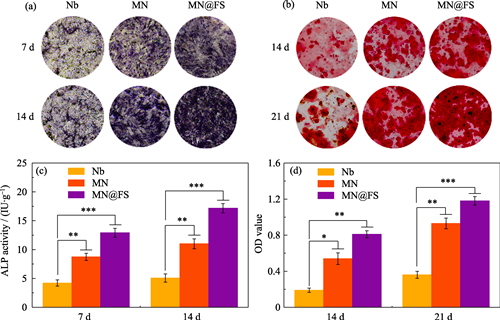
|
|
|
Activated Sludge Incineration Ash Derived Fenton-like Catalyst: Preparation and Degradation Performance on Methylene Blue
CAI Mengyu, LI-YANG Hongmiao, YANG Caiyun, ZHOU Yuting, WU Hao
2024 Vol. 39 (10): 1135–1142
 Abstract
Abstract(
155 )
 HTML
HTML(
2)
 PDF
PDF(3251KB)(
139
)
Fe@zeolite materials are widely applied in the production of ·OH by catalyzing Fenton-like reactions for degradation of recalcitrant organic pollutants due to their comprehensive sources, simple preparation and low environmental impact. However, the high cost of Fe@zeolite synthesis and the lack of Fe2+ regeneration strategy are serious issues that limit the application of Fe@zeolite as a Fenton-like catalyst in industrial-scale systems. In this study, the ash generated from activated sludge incineration treatment was utilized as raw material to selective recover Si, Al and Fe, preparing Fe2+-sodalite (FSD) material. Consequently, it was used as a Fenton-like catalyst to activate peroxyacetic acid (PAA) for the degradation of methylene blue (MB) in wastewater. Results indicated thatFSD was capable of effectively catalyzing PAA to generate various active oxygen species such as ·OH, 1O2 and R-O· in a wide pH range, thereby degrading MB through hydroxylation and sulfonation pathways. MB can be completely removed during 20 min under optimized conditions of 0.3 mmol/L PAA and 0.3 g/L FSD prepared with 0.5 mol/L Fe2+. In addition, the reductive S species in FSD can maintain its catalytical activity by enhancing Fe2+ regeneration, and the FSD/PAA system has been proven to be effective in the degradation of various organic pollutants under practical and complex environmental conditions.

|
|
|
Preparation of Na+/g-C3N4 Materials and Their Photocatalytic Degradation Mechanism on Methylene Blue
LI Qiushi, YIN Guangming, LÜ Weichao, WANG Huaiyao, LI Jinglin, YANG Hongguang, GUAN Fangfang
2024 Vol. 39 (10): 1143–1150
 Abstract
Abstract(
100 )
 HTML
HTML(
2)
 PDF
PDF(2592KB)(
66
)
Preparation of alkali metal doped g-C3N4 materials is an important branch in the research of g-C3N4 semiconductor photocatalytic materials. However, there is still lack of study on g-C3N4 materials revealing mechanisms in photosensitizer-assisted photocatalytic degradation. In this study, Na+ doped g-C3N4 photocatalysts (Na+/g-C3N4) were prepared using solution synthesis, calcination, and solvothermal reaction methods.The doped position of Na+ in g-C3N4 and photoelectric performance were determined. The changes of morphological, specific surface area, and pore size of Na+/g-C3N4 materials were analyzed by scanning electron microscopy, N2 adsorption and desorption experiments. In Na+/g-C3N4 materials, the Na+ loaded in a cyclic structure composed of three heptazine structural units, coordinating with N atoms. Na+/g-C3N4 changed the adsorption performance of g-C3N4, altered its bandgap width and position of conduction (valence) band, and increased its separation rate of photogenerated electrons and holes and charge transport rate of the material by affecting the π-conjugated system of g-C3N4. During the solvothermal reaction process for synthesis of Na+/g-C3N4, strong hydrolysis caused decomposition of unstable structures of g-C3N4 while the C-O- bonds were formed at the edge of g-C3N4. The physical and chemical adsorption sites for methylene blue (MB) of Na+/g-C3N4 materials are confirmed by π-conjugated system and C-O- bonds of Na+/g-C3N4, by which Na+/g-C3N4 materials can adsorb MB up to 93.25%, in contrast to the g-C3N4 materials’ adsorbtion only up to 24.50%. Under visible light irradiation, due to their strong adsorption capacity and photosensitivity to MB, Na+/g-C3N4 materials have constructed a unique photosensitive- photocatalytic degradation system with MB. MB not only acts as the photosensitizer for self degradation but also collaborates with Na+/g-C3N4 materials for photocatalytic degradation. At pH 6.0, the maximum degradation rate of MB is up to 96.40% in the photosensitive-photocatalytic system constructed with MB and Na+/g-C3N4 samples.
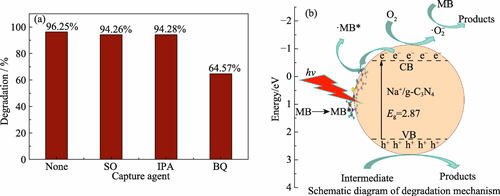
|
|
|
First-principles Calculation Study of the Oxidation Resistance of PANI Modified Ti3C2(OH)2
ZHOU Yunkai, DIAO Yaqi, WANG Minglei, ZHANG Yanhui, WANG Limin
2024 Vol. 39 (10): 1151–1158
 Abstract
Abstract(
106 )
 HTML
HTML(
3)
 PDF
PDF(14180KB)(
72
)
The poor oxidation resistance and structural stability of Ti3C2(OH)2 largely limit its wide applications. In this work, the surface adsorption behaviors of oxygen atoms on Ti3C2(OH)2, polyaniline (PANI) and PANI/Ti3C2(OH)2 composite were systematically studied and compared by first-principles calculation method. The simulation results suggest that the existence of -OH functional group can change the active sites on Ti3C2 matrix. Thereby the oxidation resistance and the structural stability of Ti3C2 matrix can be improved in some extent. Furthermore, after modifying Ti3C2(OH)2 by PANI, the adsorption activity of PANI is much larger. Meanwhile, the adsorption energy of oxygen on the Ti3C2(OH)2 end is significantly decreased, which is caused by the electron transfer from PANI to Ti3C2(OH)2, as confirmed by the Bader charge calculation. Therefore, the oxidation resistance and the structural stability of the PANI modified Ti3C2(OH)2 composite are improved by sacrificing PANI, since oxygen prefers to adsorb and attack PANI firstly. This work provides theoretical guidelines for the improvement of oxidation resistance, structural and chemical stability of MXene.
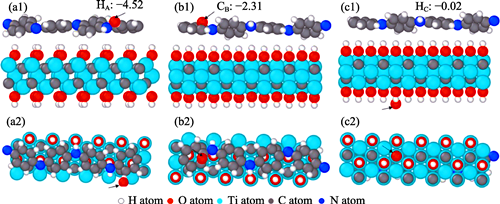
|
|
|
Optimization of Thermoelectric Properties of SnTe via Multi-element Doping
SU Haojian, ZHOU Min, LI Laifeng
2024 Vol. 39 (10): 1159–1166
 Abstract
Abstract(
105 )
 HTML
HTML(
2)
 PDF
PDF(2835KB)(
142
)
Thermoelectric materials can realize the direct conversion of heat and electric energy, and have broad application prospects in the fields of thermoelectric power generation and semiconductor refrigeration. Both SnTe and PbTe thermoelectric materials belong to the Ⅳ-Ⅵ group, and have the same NaCl-type crystal structure, but SnTe possesses poor thermoelectric properties. In this work, SnTe-based thermoelectric materials were prepared by a fast method, known as self-propagating high-temperature synthesis under high-gravity field (HG-CS) combined with spark plasma sintering (SPS). The effect and mechanism of multi-element doping on the thermoelectric properties of SnTe compounds were also studied. Multi-element doping, equivalent ions Ge2+ and Pb2+ in cation of SnTe and anionic S2- and Se2-, causes a large number of lattice distortion point defects. At the same time, rapid solidification under the supergravity field brings about plastic deformation and introduces a stress field and a large number of dislocations, which results in the formation of multilevel microstructural defects and strong scattering of medium- and high-frequency phonons. As a result, the room-temperature thermal conductivity decreases dramatically from 7.28 W·m-1·K-1 (undoped SnTe) to 2.74 W·m-1·K-1 (Sn0.70Ge0.15Pb0.15Te0.80Se0.10S0.10), with a minimum thermal conductivity of only 1.38 W·m-1·K-1 at 873 K. These microstructural defects scatter phonons and carriers, leading to a decrease in carrier mobility and conductivity. It is worth mentioning that doping decreases the bandgap of SnTe and increases the Seebeck coefficient, so that the power factor PF of the doped material remains at a high value. Finally, the peak thermoelectric figure of merit ZT of Sn0.70Ge0.15Pb0.15Te0.80Se0.10S0.10 sample is greatly improved to 1.02 (873 K).
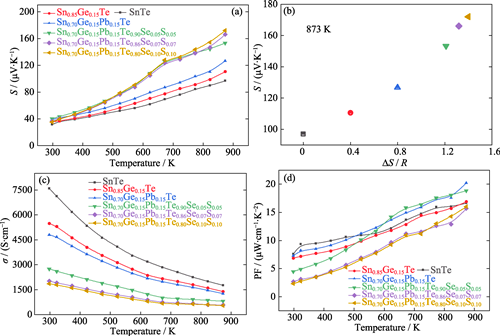
|
|
|
Impact of Crucible Bottom Shape on the Growth of Congruent Lithium Niobate Crystals by Czochralski Method
HAO Yongxin, QIN Juan, SUN Jun, YANG Jinfeng, LI Qinglian, HUANG Guijun, XU Jingjun
2024 Vol. 39 (10): 1167–1174
 Abstract
Abstract(
155 )
 HTML
HTML(
4)
 PDF
PDF(2308KB)(
148
)
Lithium niobate crystal, combining its piezoelectric, nonlinear, electro-optical, and photorefractive properties, along with its stable physicochemical characteristics, has great potential for applications in integrated optics. However, designing thermal field for large-size lithium niobate crystal growth presents considerable challenges, considering the crucible shape being an important factor that significantly influences the crystal growth in which the diameter and height are compulsively restricted to the factors such as load capacity and crystal diameters. In this study, 4-inch congruent lithium niobate crystals were grown by using crucibles with two types of bottom shapes. The impacts of crucible bottom shape on the axial temperature gradient within the crystal and the melt near the crystal-melt interface, and the temperature distribution within the melt below the crystal-melt interface, were analyzed by numerical simulation. The impact of the crucible bottom shape on crystal growth was analyzed in contrast to crystal growth results. It is found that changes in the crucible bottom shape lead to variations in the temperature difference along the crucible sidewall and the temperature gradient within the melt, thereby altering the strength of natural convection in the melt. Compared to crucible with slipped bottom corner, the axial temperature gradient near the crystal-melt interface within the crystal and melt is large when using the crucible with curved bottom corner, and the axial temperature gradient within the melt below the crystal-melt interface is also large, and the natural convection is strong. Therefore, this study helps to solve the problems such as the unwanted crystal growth ridge spreading and the overgrowth of cellular interface.
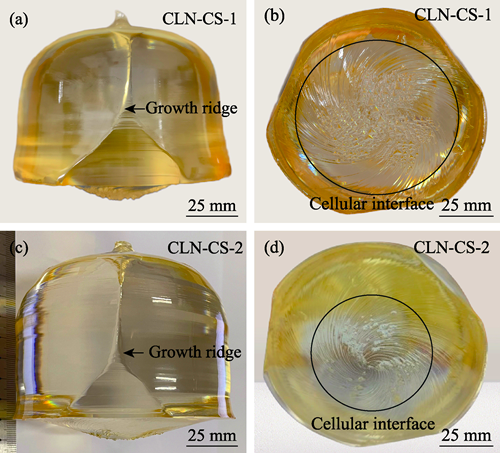
|
|
|
Predicting the Degradability of Bioceramics through a DFT-based Descriptor
CHEN Mengjie, WANG Qianqian, WU Chengtie, HUANG Jian
2024 Vol. 39 (10): 1175–1181
 Abstract
Abstract(
134 )
 HTML
HTML(
4)
 PDF
PDF(1297KB)(
121
)
Bioceramics have attracted extensive attention for bone defect repair due to their excellent bioactivity and degradability. However, challenges remain in matching the rate between bioceramic degradation and new bone formation, necessitating a deeper understanding of their degradation properties. In this study, density functional theory (DFT) calculations was employed to explore the structural and electronic characteristics of silicate bioceramics. These findings reveal a linear correlation between the maximum isosurface value of the valence band maximum (VBMFmax) and the degradability of silicate bioceramics. This correlation was subsequently validated through degradation experiments. Furthermore, the investigation on phosphate bioceramics demonstrates the potential of this descriptor in predicting the degradability of a broader range of bioceramics. This discovery offers valuable insights into the degradation mechanism of bioceramics and holds promise for accelerating the design and development of bioceramics with controllable degradation.
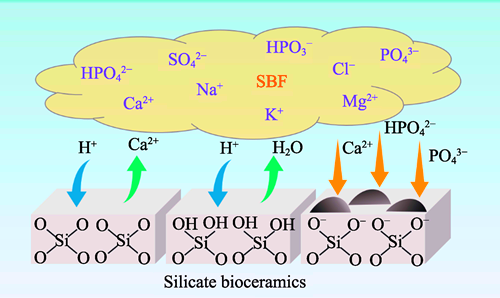
|
|
|
Mechanical Properties and Thermal Shock Resistance of SrAl2Si2O8 Reinforced BN Ceramic Composites
WANG Bo, CAI Delong, ZHU Qishuai, LI Daxin, YANG Zhihua, DUAN Xiaoming, LI Yanan, WANG Xuan, JIA Dechang, ZHOU Yu
2024 Vol. 39 (10): 1182–1188
 Abstract
Abstract(
105 )
 HTML
HTML(
5)
 PDF
PDF(3173KB)(
120
)
Hexagonal boron nitride (h-BN) ceramics have become exceptional materials for heat-resistant components in hypersonic vehicles, owing to their superior thermal stability and excellent dielectric properties. However, their densification during sintering still poses challenges for researchers, and their mechanical properties are rather unsatisfactory. In this study, SrAl2Si2O8 (SAS), with low melting point and high strength, was introduced into the h-BN ceramics to facilitate the sintering and reinforce the strength and toughness. Then, BN-SAS ceramic composites were fabricated via hot press sintering using h-BN, SrCO3, Al2O3, and SiO2 as raw materials, and effects of sintering pressure on their microstructure, mechanical property, and thermal property were investigated. The thermal shock resistance of BN-SAS ceramic composites was evaluated. Results show that phases of as-preparedBN-SAS ceramic composites are h-BN and h-SrAl2Si2O8. With the increase of sintering pressure, the composites’ densities increase, and the mechanical properties shew a rising trend followed by a slight decline. At a sintering pressure of 20 MPa, their bending strength and fracture toughness are (138±4) MPa and (1.84±0.05) MPa·m1/2, respectively. Composites sintered at 10 MPa exhibit a low coefficient of thermal expansion, with an average of 2.96×10-6 K-1 in the temperature range from 200 to 1200 ℃. The BN-SAS ceramic composites prepared at 20 MPa display higher thermal conductivity from 12.42 to 28.42 W·m-1·K-1 within the temperature range from room temperature to 1000 ℃. Notably, BN-SAS composites exhibit remarkable thermal shock resistance, with residual bending strength peaking and subsequently declining sharply under a thermal shock temperature difference ranging from 600 to 1400 ℃. The maximum residual bending strength is recorded at a temperature difference of 800 ℃, with a residual strength retention rate of 101%. As the thermal shock temperature difference increase, the degree of oxidation on the ceramic surface and cracks due to thermal stress are also increased gradually.
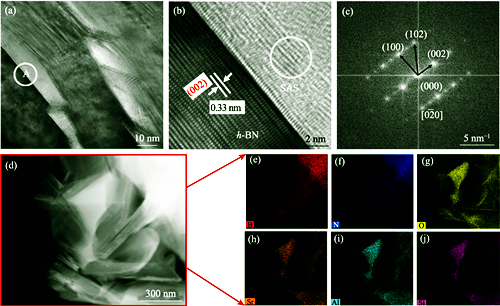
|
|